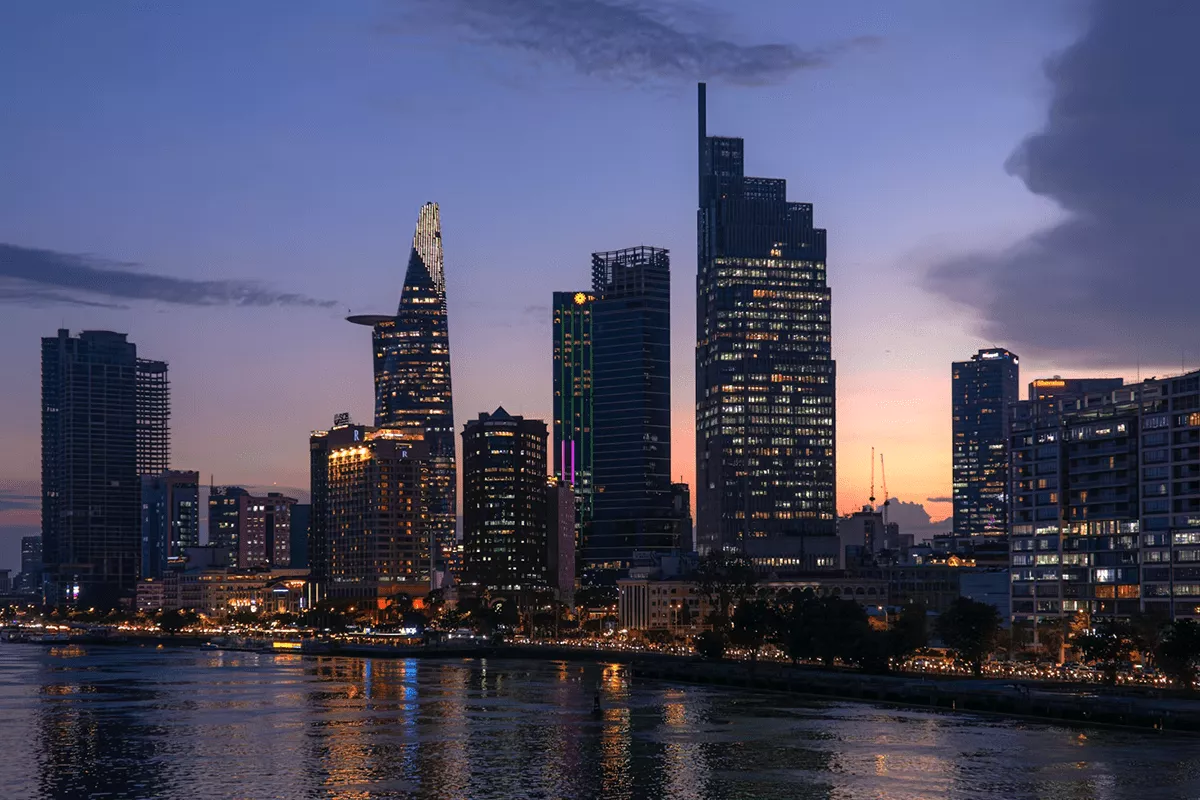Similar to most Filipinos working a 9-to-5 job in the Makati Central Business District in the early 1990s, I had dreams of becoming an entrepreneur. I started my career in the private sector working as a trader. Traders had to constantly update their market positions, and sometimes, I would stay in the office until 4:00 am; and the result of those long, torturous hours? Php 6,500 every month. I survived on fast-food restaurants that were always packed. I thought back then that I had to start a franchise business in the Philippines to become an entrepreneur.
In the 1990s, many franchises from the United States arrived in Philippine shores. Most of them were fast food, and Subway, El Polo Loco, Auntie Anne’s Pretzels, and Kenny Rogers Roasters were the popular ones. There were also nonfood franchises, such as Roto-Rooter and Mail Boxes Etc.
However, the success of the franchising industry was best represented by fast food. Every fast-food concept enjoyed brisk business. Location didn’t seem to matter in this business. People simply naturally gravitated and patronized foreign franchises. I remember being in a queue for El Polo Loco at SM Mega Mall while thinking to myself, “I should get a franchise business in the Philippines!”
Eventually, I did get to own and operate a US chain of hamburger restaurants in the Philippines. In 1998, I opened the first “Flamers Burgers and Chicken” franchise on the third floor of Festival Supermall in Alabang.
Related: 10 Things to Consider Before Owning a Food Franchise in the Philippines
The journey from a dreamer to a franchise owner took almost seven years. It took that long because I didn’t know how to go about it. I am sharing my experiences with you in the hope that I can help you reach your dream fast.
Here are my 10 steps on how to start a franchise business in the Philippines:
Table of Contents
Toggle1. Attend Franchising Seminars
This step should always be your starting point. Seminars about franchising are a great way to get valuable information on the business. They present historical data in the franchising industry, including the latest statistics and figures.
The guest speakers are successful franchisees who have no reservations in sharing their experiences with their audience. At the end of the presentation, there will be an open forum where you can direct questions to any of the guest speakers. The seminars also provide an avenue to network. You can connect with prospective franchise holders, potential partners, and suppliers.
There are many franchising seminars held throughout the year. However, the best ones are conducted by the Philippine Franchise Association or PFA. PFA is a voluntary self-regulating organization that oversees the franchising industry. The majority, if not all, of the successful franchises in the Philippines are members of PFA.
2. Conduct Comprehensive Research
Armed with information from PFA seminars, you should now have an idea on how to approach your research on the specific industry from which you plan to get a franchise.
Comprehensive research should cover the following areas:
- Industry analysis. Research the level of competition, the market share of the top players, the average net profit margins, prospects for growth, and the latest trends and developments.
- Demand analysis. Collect data on demand patterns, changes in tastes, and preferences and consumer demographics.
- Financial analysis. Assess the viability of a franchise business by presenting projections on income, cash flow, and ROI.
Your research forms the basis of your business plan. If you are not well versed in research methodology, do not hesitate to hire the services of a person who can.
3. Incorporate Your Business
If your research yields results that support the feasibility of a franchised business, begin the process of incorporating your business.
At this point, even if you have not decided on any franchise, you should still establish the legal personality of your business. Franchisers are more receptive to corporations than to sole proprietorships.
Some franchisers may ask you to first submit corporate documents as proof of authenticity before opening their lines of communication.
4. Identify the Franchises to which You Are Interested
You should have solid bases in identifying the franchises you can invest in with the data from your research.
In my case, our research indicated that hamburgers and chicken are the consensus top favorites of Filipino fast-food consumers. We did exhaustive surveys in Makati, Quezon City, Muntinlupa, and Mandaluyong on fast-food preferences. The numbers revealed that Filipinos prefer grilled hamburgers and fried chicken over pan-fried burgers and roasted chicken.
The only grilled hamburger franchise at the time was Carl’s Jr., which also serves fried chicken.
I remember going through an issue of Entrepreneur that featured the “Top 50 Fast-Food Franchises” in the United States. In the top 20 was Flamers Burgers and Chicken, which a friend of mine from New York raved about a few months earlier.
I bought the issue, which had the contact details of Flamers Burgers.
Today, organizations such as the PFA have many franchises in their directory. Even banks that offer small business loans, such as Bank of the Philippine Islands, have franchises in their programs. They can connect you with the franchises to which you are interested.
There are successful and proven franchisors in the country that offers affordable, customized, and profitable businesses. For example, in the coffee industry, you’ll find the best coffee franchise in the Philippines – Hills & Valleys Cafe.
5. Establish Communication with the Franchises
The day after I bought the issue of Entrepreneur, I faxed a Letter of Intent or LOI to the head office of Flamers Burgers. Then, I air-mailed the hard copy with company documents as enclosures. This was in 1995, and e-mail was still unheard of!
I was not sure if Flamers Burgers would respond favorably or even respond at all. So I sent three more LOIs to Ben and Jerry’s, Burger King, and Canada’s Second Cup Coffee.
Only Burger King did not give the courtesy of a response. Ben and Jerry’s responded that the company was not ready to expand to Asia. Both Flamers Burgers and Second Cup Coffee sent hard copies of their franchising programs.
We used the information from the franchising program to update the data in our research. At this point, we had trained our focus on Flamers Burgers as the top priority.
6. Prepare a Business Plan
With the franchise identified, we proceeded to prepare a business plan, which covered the following areas:
- Industry Highlights
- Market Overview
- Target Demographics
- Study on Food Cost
- Proposed Menu Mix
- List of Potential Suppliers
- List of Prospective Sites
- Time-Table of Development
We were regularly communicating with the principals of Flamers Burgers through fax and late-night overseas calls. They were very accommodating and sent as much data as they possibly could to help with our research.
When you have identified a franchise and have established communication, you should now move to fine-tune your preliminary research into a comprehensive business plan. Most franchisers will require you to submit a business plan before they can award you a franchise.
7. Visit the Principal Headquarters of the Franchise
In May 1996, I made a trip to the principal headquarters of Flamers Burgers, which was located in Jacksonville Beach, Florida.
The purpose of the trip was to meet the people behind Flamers Burgers, discuss the business plan, taste the menu, and observe operations. Meeting the proponents is important because, as potential partners in the venture, you should find out if they are an ideal fit to what you are looking for in a franchised business.
You should get an idea or feel of their company culture. I talked with some of the service crews and managers in the Jacksonville Landing location of Flamers Burgers to find out how they viewed their work and sentiments toward the company.
I spent three days in Jacksonville Beach, Florida. I would spend time in their office learning operations, visiting different stores in the area, and meeting with different people in their value chain.
It is much easier and less expensive to meet franchisers now because the technology is available to establish high-touch communication avenues. Some franchisers, such as Subway and Carl’s Jr., have also set up regional offices in South East Asia or SEA to connect fast with interested franchisees.
However, if you are interested in a foreign franchise without a regional office in SEA and you have the financial resources, make a trip to visit the principal office. Doing so can well be the deciding factor in getting the franchise or not.
8. Review All Documentation
When you have entered into a verbal agreement or informal written agreement with the franchiser, the next step is to review all the required documentation. The franchiser will send you the following documents:
- Master Franchise Agreement or Franchise Agreement
- Confidentiality Agreement
- Memorandum of Agreement
- Statement of Assets and Liabilities
- Product and Service Specifications
This is a ton of reading! The Master Franchise Agreement or MFA is a thick document that should be forwarded to your lawyer for review. The Statement of Assets and Liabilities is sometimes required to confirm your financial capacity to manage a franchised business.
It took us almost a year to negotiate the fine points of MFA. Our lawyers were very critical of some of the provisions, and at times, negotiations got testy.
However, this is all part of the process. Your lawyer works to protect your interest. Keep this in mind and do not become impatient. Remember, once the MFA is signed, there is no turning back especially if initial payments have been made.
9. Get Your Business Plan Moving!
Once all the paperwork is out of the time, your focus should now shift to making your franchise business a reality. Your life will go from 0 to 120 mph without warning. Previously, the business plan was purely theoretical. Now, you have to make it work.
Many things must be accomplished. Unless you have a knack for organization, these things can be overwhelming. Here are a few tips to get your business plan going:
- Hire a project manager or store manager. He or she should have the experience to give you credible advice in different areas of the business.
- Set up your back office team. This involves accounting, human resources, and IT. Delegate the following tasks:
- Accounting- Securing business permits, all bank opening requirements, employee benefits forms, systems for invoicing, payroll, payables, purchasing, receivables, inventory management, and cash management.
- Human Resources- Recruitment, testing, selection, documentation, training, and counseling.
- IT- Maintenance of website, social media accounts, and POS systems.
- Earmark, at least, three prospective locations for your franchise. You’ve heard several times that choosing the right location is crucial to the success of your franchise. Do not be influenced by the name of the developer. Take the time to research on the location. Do traffic counts, talk to current tenants, and survey customers who frequent the area.
- Find an architect and an interior designer to build your store. Oftentimes, the franchiser would want input on the design process. We had our accountant work closely with the contractor to make sure that the items detailed in the invoices were already delivered.
- Source suppliers and creditors. I hired a purchasing manager to help me qualify suppliers for our burgers, chicken, and other menu items. Flamers had very strict guidelines for the composition of its signature hamburger patty. In the 10 years we ran the franchise, only two meat refineries were qualified to provide the patties.
- Look for creditable equipment suppliers. This can be exhaustive because there are many types of equipment available in the market that can do the same thing. You have to test all viable pieces of equipment. We always had to have a cooler with burgers and chicken with us to cook. I had my purchasing manager and store manager on-board on this task.
- Schedule training with the franchiser. In our case, Flamers sent three trainers from Florida to work with the team. However, prior to this, the store manager, my sister, and I trained at the Flamers franchise at The Prudential in Boston, Massachusetts, for one month.
You have to constantly refer to your development time table, and it must be updated whether you are ahead or behind schedule.
We signed the MFA in August 1997 and opened the first Flamers franchise on February 7, 1998.
10. Initiate Marketing and Promotional Activities
This is where we made our biggest mistake. The mistake had nothing to do with our marketing program at the time. The problem was we did not invest in any marketing program at all. When we were about to start the franchise business, we did not have any marketing plan in the pipeline.
We were thinking that with only one franchise, “word-of-mouth” would be enough. In 1998, there were no social media. All marketing used traditional methods, such as local store marketing, local area distribution, and point-of-purchase advertising.
We were clueless at the time that marketing and promotion were not simply for sales generation. They were also important for market retention.
The emergence of social media, the popularity of blogging, search engine optimization or SEO, and other online marketing techniques has resulted in easy and efficient operation of marketing campaigns. The value on online marketing is that it brings you and your market in the same forum. A high level of engagement also exists.
You have to invest in a mobile-responsive website and allocate resources to support a full-blown online marketing campaign. Hire a digital marketer who can set up a team to manage your campaign full time. The best thing about digital marketing is that its results can be measured.
Start your Franchise Business in the Philippines
In the end, however, my initial venture in the fast-food franchise business was not a success. We shuttered operations after 10 years and four branches.
Running a fast-food franchise is different from living the entrepreneurial dream vicariously as a customer. If you want to start a franchise business in the Philippines, keep in mind that there are many variables to attend to. More often than not, the factors that affect these variables are beyond your control. I can imagine that nonfood franchises go through similar challenges.
However, the franchise industry remains robust. A 2010 study showed that franchised businesses only have a failure rate of 3.7%. With many franchises from different industries opening in the Philippines, I believe that this study has merit even in 2015.
If you want to start a franchise business in the Philippines, by all means, pursue your dream! With an established franchise, you don’t have to worry much about branding strategies and designing an efficient system for operations and business management.
The truth is despite my initial setback in the franchise business, I would not mind giving it another go. I am confident that, this time around, the results will be different!
Further reading: 34 Best Business Franchise Opportunities in the Philippines for 2016
Ricky Sare is a writer, an entrepreneur, and a member of Tycoon Philippines editorial team. He is also the owner of Benchmark Global Management Solutions, Inc., a BPO company located at Makati.





